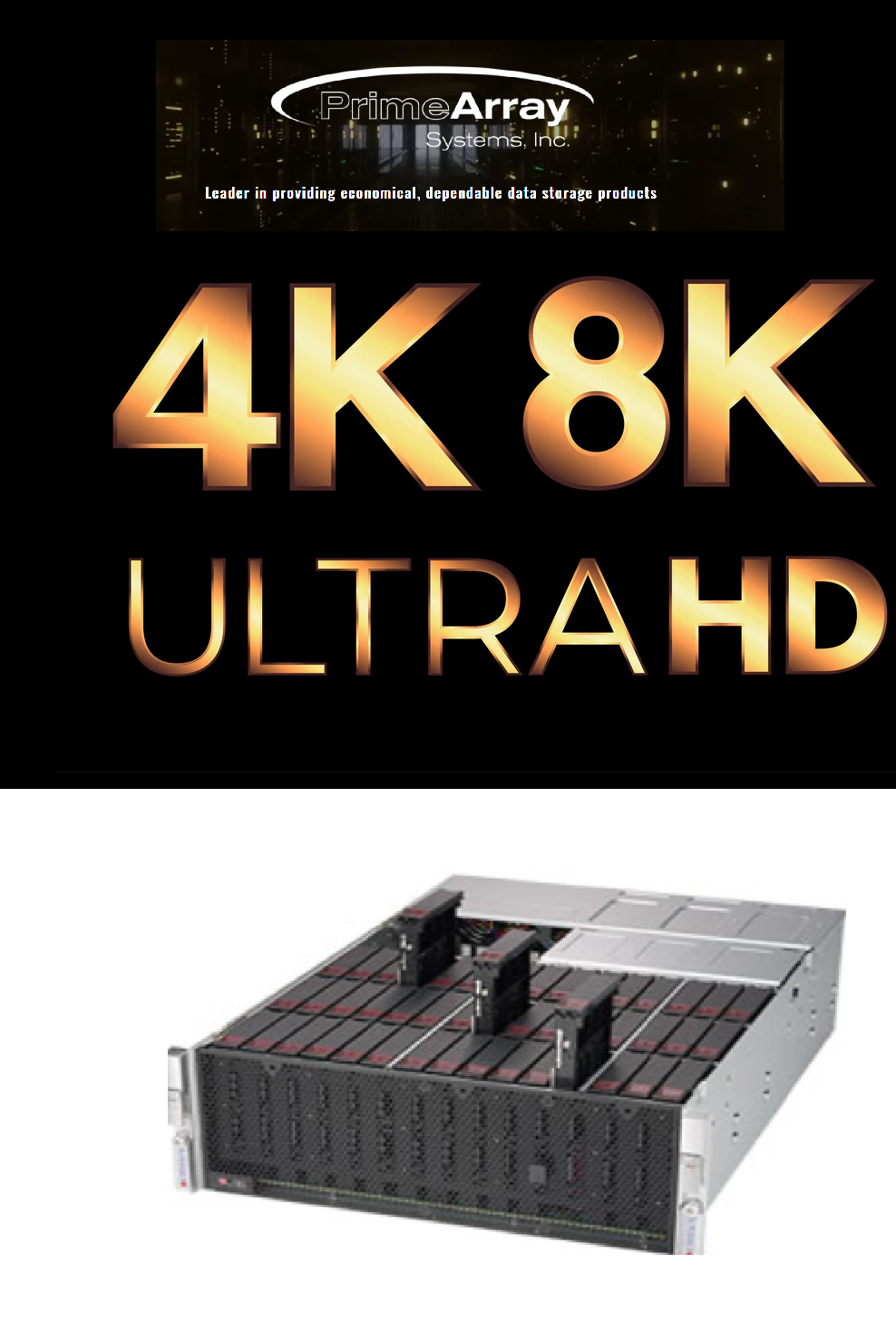As video quality grows, PrimeArray storage systems have your back, allowing for easy storage of massive pixels

What is 8K TV
8K resolution goes beyond 4K. Specifically, it’s a resolution of 7680 x 4320 pixels, which adds up to more than 8 million pixels. The resolution is high enough to produce a very detailed image, sharp even when viewed up close. You can clearly make out the details, lines, and colors in 8K video, though sitting at some distance helps fully appreciate the detail.
8K Transport
8K can use several types of cable/connectivity for transfer:
- HDMI 2.1
- DisplayPort v1.4
- 12G-SDI over coaxial or fiber
12G-SDI offers the highest quality transport for passing 8K/UltraHD2 video, utilizing 4x 12G-SDI for 8K transport. HDMI 2.1 and DisplayPort v1.4 both carry 8K/UltraHD2 via single cables, but typically at shorter distances, connecting displays to graphics cards or devices that support them.
Hollywood’s Huge (And Growing!) Storage Demands
Blockbuster movies are exciting to watch, but behind the scenes they create huge storage requirements for producers. PrimeArray explores the factors affecting storage needs in the media and entertainment industry — and how LTO technology can help.
Hard Drives, SSDs, and Other Media
With hyper-converged systems using petabyte hard drives and NVMe caching, it’s now possible to store video on what would traditionally be considered primary storage.
PrimeArray Performance Storage Solutions — Dedicated On-Premises Servers
A top-tier solution for video production storage is dedicated on-premises servers, such as NAS, SAN, or DAS. These storage solutions connect to servers or workstations to improve remote workflows.
PrimeArray Direct Attached Storage (DAS)
DAS discs connect locally to servers and workstations. They’ve evolved through technologies like SATA, PATA, SCSI, and SAS.
Storage Area Network (SAN)
SAN solutions are ideal for remote teams (editing, proofing, delivery, etc.), allowing multiple networks to share one storage environment. SAN can be further divided and used across different servers.
iSCSI
iSCSI provides 1–10 GB/s speeds using SCSI commands over IP. It works with virtually any storage server.
Fibre Channel
Fibre Channel offers speeds up to 20 GB/s, using dedicated hardware such as a Host Bus Adaptor (HBA) and special fiber channel cables.
Network Attached Storage (NAS)
NAS provides a shared storage node with multiple disks, appearing as a single location in a RAID array. Unlike local drives, NAS is accessed over a network using protocols like CIFS, NFS, GFS, and AFS. This allows multiple users to access files simultaneously, making NAS an excellent choice for remote teams.





















































































.webp)
















